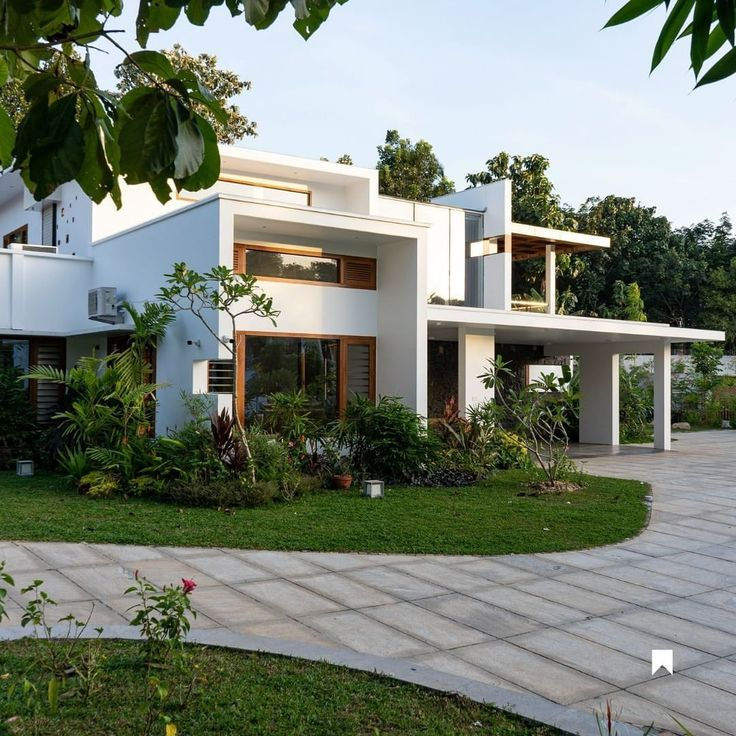Interior Design Styles in India
- bhimanyu dassani
- Jul 29, 2024
- 4 min read
A complete guide on different styles of interior designing. Read on and give your space a polished elegance.
Moving into your dream home or amending your existing one can be both exciting and discouraging if you do not know exactly what type of interiors you want in your abode.
Traditional, modern, or contemporary? What are these styles? With infinite pictures in magazines and endless google images, it is natural to get confused when you try to shortlist the right styles for your space.
Here are a few types of interiors designing styles in detail and reading them, you might understand whether you should pick one or whisk a few, to get your desired space.
Modern
Modern interior design style has clean and simple lines, minimalism, monochromatic colours, natural light, and materials. The principle of this style of designing is to create open and clutter free experience which means that the home should not be adorned with unnecessary flourishes. Also, low and long furniture is used to achieve a modern look.
Contemporary
Contemporary style is ever evolving. It does not have a specific philosophy but it means the styles that are dominant now, ‘in the moment.’ This style can be considered as a mix of the best from all the styles. Art, minimalism, thoughtful hidden details, modernism featured designs that are high on functionality and clean in appearance, is what makes contemporary interior style.
Indian Traditional
Traditional style of interiors is comfortable, warm, classic, and not overly fancy. Neutral colour palette with pops of colours through paintings, carved wood, upholstered furniture and matching nightstands or table lamps are very common in this style of design. It is rooted in the traditions of past and is not specific to any single period. It usually varies across the country.
Minimalist
This minimalist interior design style emphasizes minimalism in all aspects of interior design. It has simple furnishing, neutral colour palettes, functional but not flamboyant accessories. Everything is streamlined, simple, and necessary.
Scandinavian
This interior design style is a combination of various design styles that evolved in the 20th century in the countries of Norway, Sweden, Denmark, Finland, and Iceland. The style is also about minimalist interior, utility, and simplicity. It is warm and leaves space for personal invitations. How it is different from minimalist designs is that it emphasizes on affordability and not just on necessity. Bare ornaments, rounded furniture, organic and clean detailing, dominantly black and white colour palettes are few of its features.
Classical
Evolved in European countries in 18th and 19th Century. This interior design style includes heavy ornamentation through use of trims and Wainscoating. Also known as european design theme in Indian Interior Market. Leather upholstered sofas, Glass light fixtures, persian rugs, Fireplace, decorative wallpapers and decorative elements on all surfaces describe the Classical Interiors.
Neocalassical
Modernised version of Classical Interior design style, this can be defined as toned down ornamentation as compared to classical interiors. With increased focus on functionality and comfort of space, this design style usually includes modern furniture, rugs and light
fixtures along with use of ornamentation on walls and ceilings. With one or 2 heavily ornamented design feature.
Shabby Chic
The Shabby Chic Style features airy lighting fixtures, antique-touch furniture, and a vintage-vibe. It is inspired by modern designs, but it has some elements of contemporary design. The home uses elements that appear old with wears and tears on them. Even new items are distressed to give them antique look.
Eclectic
Eclecticism is a rich style of designing and is layered with ideas picked from design eras and styles over the centuries. This style includes contrasting style elements, colours, and textures together for a unique feel. This design style is considered to have ‘anything goes’ approach. Textures and patterns can be used to harmonize the mood. Also, statement pieces are essential in this style of design.
Industrial
Industrial Design is a blend of style and utility. In this style, the building materials that are otherwise concealed like bare brick walls, pipes, and recycled materials are exposed. This style makes a functional, stylish space with modern elements. Homes with this design style usually have open floor plans and the furniture is arranged to divide the space.
Farmhouse
A farmhouse unites us with nature and so does the Farmhouse Interior Design style. The style uses the natural elements and creates a farmhouse-like vibe in any city home. The highlighting aspect of farmhouse interior design is that each space is driven by a particular element. minimalistic functional interior and elegance. Modern industrial elements, heirlooms, artistic elements, blend together to create a luxurious and relaxing home.
This style is a combination of culture and cultural expressions. It uses bold patterns and bright colours, metallic accentuations, rich wood, fabrics like hand-woven Moroccan hairpieces, Japanese block prints and Malian slush clothed gamble pillows.
Art Deco
Straight lines along with geometric shapes used for Ornamentation. This style evolved in America between First and Second World War. Came to India after Second World War. This is a very distinctive style which left a great impact in Fashion as well as product design across the globe. This style is increasingly getting back in trend with passing time.
(Disclaimer : All the images are from the web. Kindly contact the admin in case of any discrepencies)

















Comments